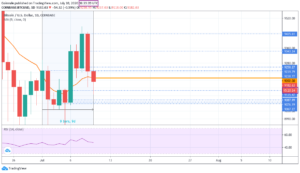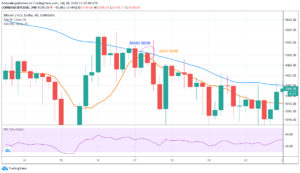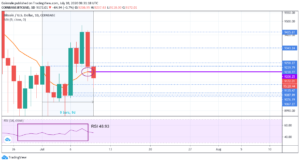Category
- Trading Academy
- Get Started
- Exchanges Guidelines
- Trading 101
- Master TradingView
How To Calculate Technical Indicators?
Technical indicators are mathematical formulas applied to asset prices. Their purpose is to provide traders with useful information about the trend or market conditions of that specific asset. Traders use this information to assess the likelihood of a particular scenario to unfold. How to calculate technical indicators to optimise the results of your strategy?
Interpretation of technical indicators
It’s important to stress that a technical indicator does not represent a trading strategy per-se. On the contrary, the trader uses technical indicators applying his own methodology to run a trading strategy.
Apart from the subjective interpretation of signals generated by indicators, an experienced trader may also adjust the mathematical formula or the setup of an indicator to provide more effective outcomes that he can incorporate directly into his trading plan.
One common trading tip that advanced traders use is to calculate indicators starting from the closing price of the asset in a specific period (according to the selected time frame). Then, the trader considers only signals generated by “closing prices.”
Wait for price confirmation
The example below shows the daily price chart of BTCUSD. The chart includes the Moving Average (9) and the RSI (14).

The MA(9), in the example at 9202 (orange price) is the average of nine days, using the closing price as reference for each day. Tradingview calculates the indicator using the closing price from the previous eight days (prices in blue) and includes in the calculation the last traded price of the current day (9181, in red). Since this price changes constantly, the MA(9) will change as well.
In the example provided, still, more than 15 hours are left before the end of the day, a lot could happen on the market, and the value of the indicator could change significantly. The current signal that the indicator is providing may not be confirmed at the end of the period. Therefore, the volatility of the last traded combined with a value of indicator that changes accordingly may generate a lot of signals, most of them likely not significant.
Avoid false-signals
Looking at the following example, the MA9 and the MA50 appear very close one to each other. Brief price spikes can cause the indicators to cross, generating a signal not validated by the closing of the candles. This situation happens quite often, especially when potentially significant trading signals are on the verge of occurring.

How Coinrule solves this?
Coinrule trading bot uses only confirmed “closed prices”, that means that it excludes from the calculation of the indicator the current market price. The resulting value of the technical indicator is static, and short-term market volatility doesn’t affect it.
Calculating indicators only based on closed/confirmed prices represent the best way to calculate technical indicators to optimise their signals for your strategy.

Patience is one of the most valuable virtues for traders, and waiting for the confirmation of a trading signal will add value to your strategies! Thanks to Coinrule, you can include this into your automated trading system.